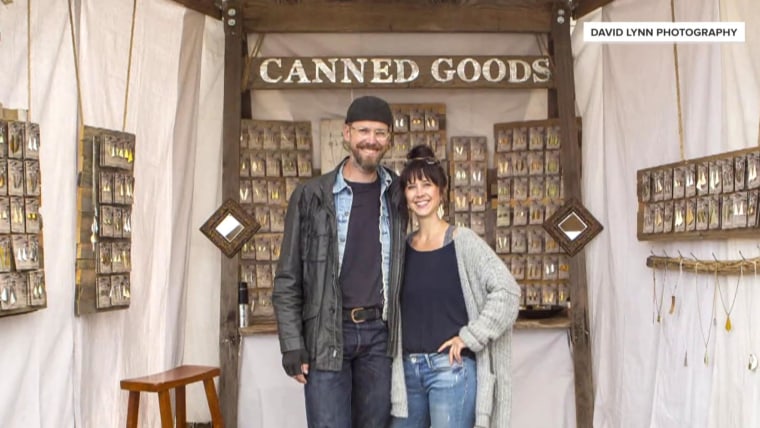We are all works in progress; even the successful women you see owning it on Instagram faced stumbling blocks along the way and continue to work hard to stay at the top of their game. In this series, we’re sitting down with the people that inspire us to find out: How’d they do it? And what is success really like? This is “Getting There.”
Madeline Fraser is a seasoned entrepreneur who founded her most recent company, Gemist, after struggling to find an engagement ring she loved. Two years later, Gemist has been called the Warby Parker of the jewelry industry because it allows customers to try pieces on at home before committing, in addition to allowing customers to design jewelry themselves online.
Before that, Fraser was the co-founder of two other businesses: Zoom Interiors, an online interior design platform she and two college friends started, and later Hutch, a design app. The 30-year-old, who lives in Los Angeles, spoke to TMRW about how she caught the startup bug and what she’s learned about success along the way.
TMRW: How did you get into entrepreneurship?
Madeline Fraser: I never set out thinking that I was going to create and grow startups; it just kind of happened. I’m a very creative person and a really curious person. When I graduated from high school, I took a gap year and lived in India, where I started an art program. It showed me that I could create something out of nothing, build something from the ground up.
You founded your first company in college. Does that mean you’ve never had a regular desk job or worked for someone else?
I’ve never thought of it that way, but you’re right. I’ve always built something from scratch and then I’m the one who’s actually paid myself. I’ve given myself a salary from day one. You just gave me chills thinking about that.
So you were already an entrepreneur with two design companies under your belt when you came up with Gemist. Tell me about where the idea came from.
I was getting engaged and I really wanted a ring that was unique to me. I wanted something that no one else had. Because I’m a tech person, I thought, “Well, I’ll just go online, I’ll design a ring, I’ll try it on and then I’ll have it — so easy.” And it wasn’t. It was the opposite. I was really, really surprised that there were no beautiful tech platforms around jewelry. This was 2018, 2019. There were some companies, but they felt really sterile, like the Walmart of jewelry, exactly what everyone else had. The user experience was outdated. The tech was outdated.
We had been building tech around furniture and design for years, and I felt like jewelry could do really well with the home try-on experience. If you could take customization and design and do it online, but then actually see it and feel it and show your friends and family before making this big purchase, how would that convert the consumer, and how cool would that be?
But you hadn’t created Gemist at that point, so what did you do for your own ring?
We went to the jewelry district. It was this very overwhelming, manual, confusing process. But we ended up getting a beautiful ring at a great price point. It really showed me that there was a viable product. You can actually make custom jewelry affordably and quickly, which was surprising to me. I said, “OK, great. So we just have to change the process of getting there.”
And that’s basically what my job is, right? That’s what I do for a living: I change a process. I make something easier, mainly through technology. So that’s where the idea for Gemist came from, and that’s what we built. And it’s grown incredibly well over the last two years of testing and getting it out of beta and into the world, which happened to happen right before Covid-19. So it’s been an interesting year, but very much a value add for consumers who can’t leave the house, right?
What was the biggest challenge in making Gemist a reality?
Fundraising. You can bootstrap companies, for sure. That’s what I did with my first business. But if you really want to be a player and actually disrupt an industry, you need capital. You need partners. As a CEO, you have to remove yourself from the creative side and the passion of building a company, and you have to go sell. You have to ask people for money and convince them that you’re worthy of that investment. I love mentoring other founders and usually the biggest questions are around raising money. That’s never an easy thing.
What do you tell people when they ask for advice in that area?
The first thing is: They have to have their pitch down. The modern version of a business plan is a pitch deck, and that needs to be incredibly succinct and clear. You need to understand your market, your consumer and how and why you’re different from your competition. Get your pitch down. At this point, I know mine so well it’s like my arm. It’s a piece of me. It just comes out of me. Live, breathe, become your pitch. Have that much passion and conviction in what you’re building and let it come out of you so that the other person really feels that.
Then do the practice rounds. Before you go to the top 10 investors you actually want, you’ve got to go to the lower tier people or even friends and family. Do your pitch and do it 10 times before you go to the people who really matter or could potentially fund you.
Also, you have got to have an incredible amount of confidence. You have to believe in yourself more than anyone else does. You have to actually think, “Hey, they need me as much as I need them.” You have to have that energy.
And, by the way, to raise a round of money, you’re probably going to get 200 people who say no to you just to find the handful of people who say yes. It’s such a hard thing. I cry all the time! You face a lot of rejection. You just have to pick yourself up and believe in yourself and your idea and your team.
Was there a moment that you knew Gemist had made it?
When I was able to land De Beers as an investor, that was huge for me. They had me come to London and I had to pitch their top C-level executives and all their top stakeholders in person — this was pre-Covid. Having to actually stand in a room with that many intimidating people judging you, listening to you, focusing on you, was such an interesting thing for me. I ended up sort of having an out-of-body experience where I felt like I could almost see myself doing it, like a fly on the wall. That was really a game-changing moment in my career.
What advice would you give to anyone who wants to start their own company?
I have a mantra: fail fast, fix fast, learn fast. You’re going to fail a lot of times because you’re building something that nobody has built before you. You are paving the way to create something brand new. So the concept is when you do fail, do it as fast as possible and learn from that failure and just do your best to never fail the same way twice.
Those are the building blocks of success. Say, “OK, that didn’t work. Let’s try this. That didn’t work. Well, let’s see why it didn’t work.” You sort of build these steps in this ladder until you get to a version of success. It’s not easy. It’s a crazy hard thing to do. When I talk to my husband or my family about what I do, sometimes I laugh because I’m like, “God, my job is insane. Who am I to think I’m going to innovate the jewelry industry? What am I thinking?” But then you look back at the things you’ve accomplished and slowly you get there, which is really cool.
This interview has been edited and condensed for clarity.
Related:







More Stories
Using Dynamic Rugs Brilliant Rug Collection in Your Living Room
Interior Design Trends For Your Home
Key Elements of Interior Designing